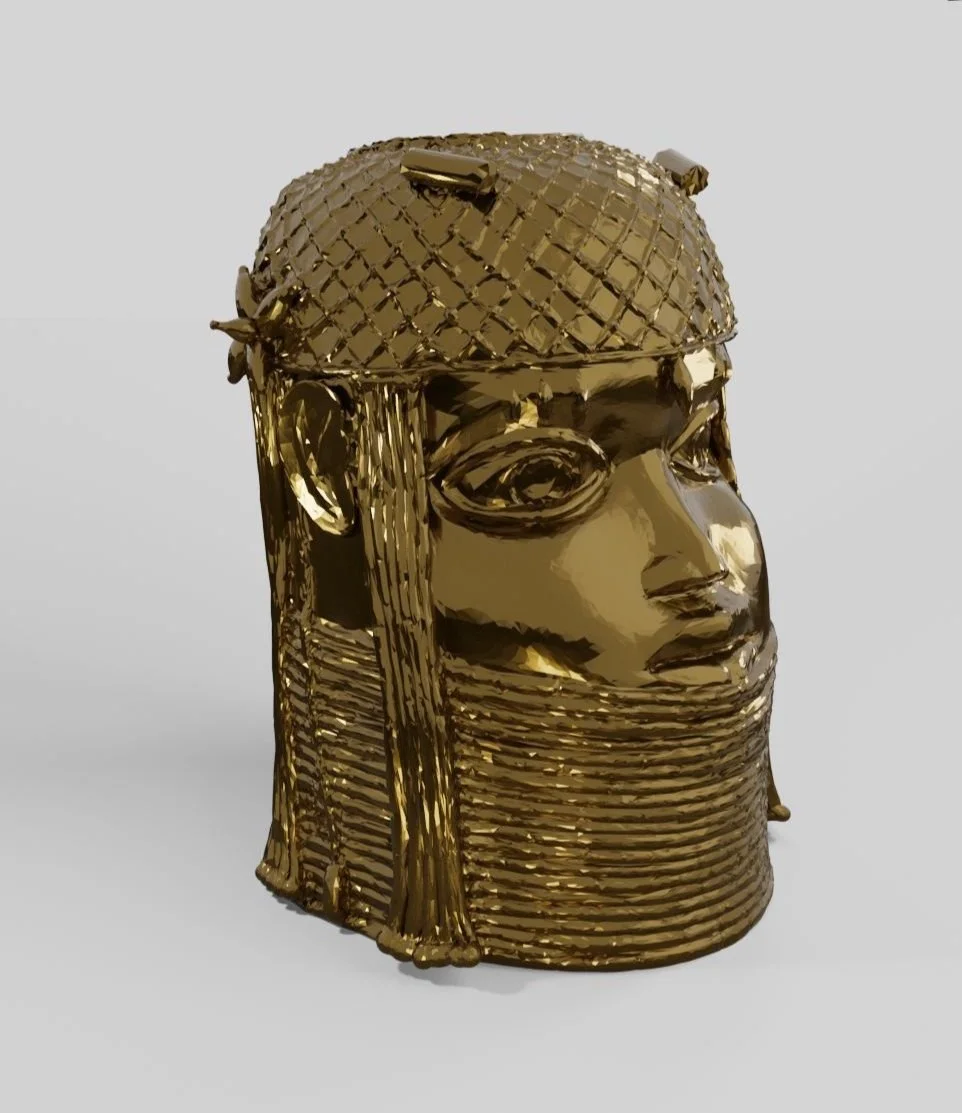Digital Scanning, NFTs, and the Metaverse: Reclaiming Stolen Art
Words by Beth Jones
Over recent years, there has rightly been an escalation in discussion about the problematic legacy of colonialism and imperialism upon the UK’s museums, galleries, and cultural institutions. The Benin Bronzes (a group of 4000 metal plaques and sculptures that decorated the royal palace of the Kingdom of Benin in what is now Edo State, Nigeria) have received particular attention by those pushing for cultural and institutional decolonisation. Though this collection of objects represent the epitome of Benin art (ranging from across the thirteenth-nineteenth centuries), these plaques and sculptures have been destructively scattered across Europe and the United States - a process triggered by imperial Britain’s aggressive Benin Expedition of 1897 in which the objects were traumatically looted by British forces. The Benin Bronzes, even in the twenty-first century, continue to be displayed in Western public spaces like the British Museum in London and the Ethnological Museum of Berlin.
Benin Bronze plaques on display in the British Museum
Nigeria has consistently sought the return of these historical artworks, and, although European museums and galleries have occasionally sold or given back individual Bronzes to the Nigerian government over the past seventy years, European and American institutions continue to hold the majority of them - a transnational standoff that urgently needs to be (decolonised and) overcome. This is where Looty comes in, a project priding itself on the “world’s first digital repatriation of art to the metaverse”. This unique initiative has begun reclaiming colonially-looted African art in digital form - by harnessing digital technologies, in particular accessible photographic scanning techniques. In response to Looty’s identification that there are thousands of stolen artworks held in museums and private collections around the world, their ‘Looters’ physically visit these museums and digitally take back these artworks by (consensually) taking LiDAR scans on phones and tablets. LiDAR is an acronym of Light Detection and Ranging, and is a form of 3D laser scanning. These scans can then recreate African artworks as Non-Fungible Tokens (NFTs), and even into 3D printed tangible objects (emotion-evoking archaeological artefacts themselves) - enabling the public to literally own these digital assets and contribute to the reparations process. The first artworks targeted by Looty are the Benin Bronzes based in the British Museum.
The LiDAR scanning process
Looty’s Gold-Bronze NFT for sale
These digitally reimagined, reconstructed, and resuscitated ancient artworks created by Looty are being sold as NFTs to both the public and also cultural institutions in Nigeria - with parts of the proceeds going to emerging Nigerian artists as a way of, in their words, “empower[ing] the future generation of artists from the continent of Africa”. Moreover, the Looty project coordinators aim to curate these 3D-scanned images into their own form of metaverse; they intend to create a digital gallery or exhibition which is internationally accessible, and represents the outcomes of “digital restitution” and the “digital repatriation of stolen art”. An educational, empowering, and interpretative metaverse of this form could indeed transform pedagogical approaches to these histories, by literally reaching beyond the four-walls environments of galleries, museums, and classrooms.
A stylistic demonstration of the NFTs within their decolonial ‘metaverse’ exhibition
The Looty initiative is not alone in its work, with a similar project based in Congo called Balot NFT. The ‘Nefertiti Hack’, for example, demonstrates that artists have used 3D printing and replication techniques to protest colonialism and reclaim artworks - in this case by scanning the bust of Nefertiti currently housed in the Egyptian Museum of Berlin. Repatriation and restoration projects like these emphasise the significance of ownership when it comes to artworks and cultural artefacts, and indeed demonstrate that NFT technology, new scanning techniques, and Blockchain offer new ways of (re)claiming this ownership and authority.
Digital render of the process of 3D scanning the Nefertiti bust
These initiatives, though currently fairly localised and small-scale, have huge potential in answering some of the contentious questions when it comes to fraught transnational debates over colonial legacies in European cultural institutions and regarding the contemporary ownership of imperially-stolen artefacts. The discipline of Archaeology itself continues to be shaped by structural inequalities and privileged systems of power, yet digital technologies have the capacity to transform this critical heritage paradigm - by facilitating restorative justice, coproduction of historical knowledge, multivocal heritage discourses, and heightened public agency in the treatment of cultural artefacts. It will be interesting to see how institutions respond to projects like Looty that are digitally decolonising the UK’s museums and galleries.






